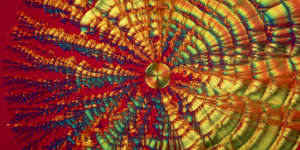| A scientist by the name of Dam found Vitamin
K in 1929 through a series of developments. It was not until 1931 that
he discovered its relationship to blood clottting after McFarlane and
some other scientists began having blood deficiencies. He primarily used
chicks (that's baby chickens, not young ladies) to "play" with
the levels of Vitamin K they recieved and, in 1935, he concluded that
the new antihaemorrhagic vitamin was fat-soluable. It wasn't too long
(1939 to be exact) that Vitamin K-1 was synthesized in a lab. A large
growth of Vitamin K studies errupted after this, and Brikhous, yet another
scientist, found that changing the levels of Vitamin K changed the rate
at which blood clotted and de-clotted respectively in 1940. Dam won the
Nobel Peace Prize in 1943 for his discovery of Vitamin K, and Doisy won
the Nobel Peace Prize in the same year (?) for figuring out the chemical
nature of Vitamin K. Then, in the seventies, its whereabouts in the human
body are slowly picked out and isolated, like the liver and intestine. |
